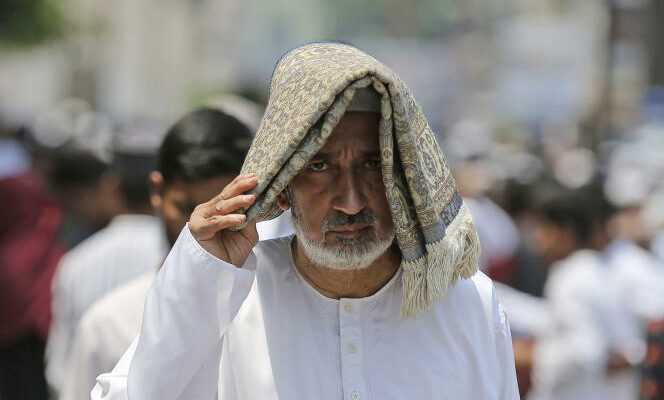Power cuts in India and Pakistan on Friday April 29 worsened the living conditions of millions of inhabitants, already overwhelmed by a record heat wave that experts link to climate change.
Unusually hot March and April pushed up energy demand in India, as well as Pakistan, so power plants are now running out of coal to meet demand.
Several Pakistani towns suffered up to eight hours of power cuts a day last week, while rural areas suffered power cuts for half the day.
Less than a day’s worth of coal in stock in New Delhi
“There is an electricity crisis and load shedding across the country”said Pakistani Energy Minister Khurram Dastgir Khan, referring to shortages and “technical failures”. Temperatures are expected to exceed the seasonal normal by another eight degrees in parts of Pakistan, peaking at 48 degrees Celsius in parts of rural Sindh on Wednesday, according to the Pakistan Meteorological Society.
Scientists say that due to climate change, heat waves are more frequent but also more severe. In the Indian megalopolis of New Delhi, where the temperature reached 43.5 ° C on Friday, the authorities estimate that there are still “less than a day of coal” in stock at many power stations.
“The situation across India is dire”, according to Delhi Chief Minister Arvind Kejriwal, who warned of possible cuts to hospitals and the capital’s metro. India has even canceled some passenger trains to speed up the delivery of coal to power stations, according to the Bloomberg News news agency. Coal reserves at Indian power plants have, in fact, fallen by almost 17% since the beginning of April, falling to barely a third of the required levels, according to the same source.
No rain for two months
In Calcutta, in eastern India, after a series of illnesses in public transport, sugar water was distributed to passengers. “Without rain for more than 57 days, Kolkata is in the grip of the longest drought of this millennium”says Sanjit Bandyopadhyay of the regional meteorological center.
At this time of the year, in the highlands of the state of Himachal Pradesh, rain, hail and even snow fall normally, but for two months, not a drop of water and temperatures are breaking records.
As a result, hundreds of fires have reduced pine forests to ashes, especially around Dharamsala, the city where the Dalai Lama resides. “Most of these fires are ground fires which spread in the pine forests, the most vulnerable to fires”explains to Agence France-Presse (AFP) the head of state forests, Ajay Srivastava. “Fire crews are working hard to put out these fires and also to save wild animals”he added, specifying that the relief had to ask the help of the residents.
Closure of schools or reduction of class hours
For Muslims observing Ramadan, the heat has made fasting difficult. As the sun set, vendors did a thriving trade in Rooh Afza, a pink, sweet elixir that has been popular for generations on the subcontinent to quench thirst.
The heat wave also led to the closure of schools or the reduction of class hours. In Patna, capital of the state of Bihar, sunstroke has increased over the past ten days, as have the number of children suffering from fever, vomiting and diarrhoea.
The authorities ordered the end of the courses at 10:45 a.m. and recommended not to go out in the afternoon. A plague for the economy, because if “People stay at home during the day, we struggle to earn a living”summarizes Rameshwar Paswan, a rickshaw driver.
